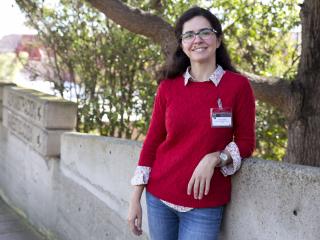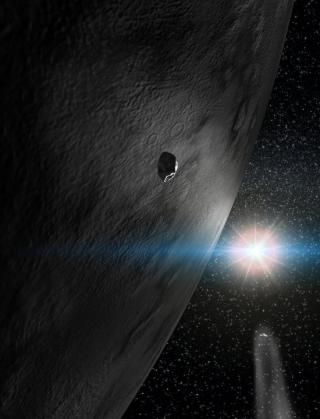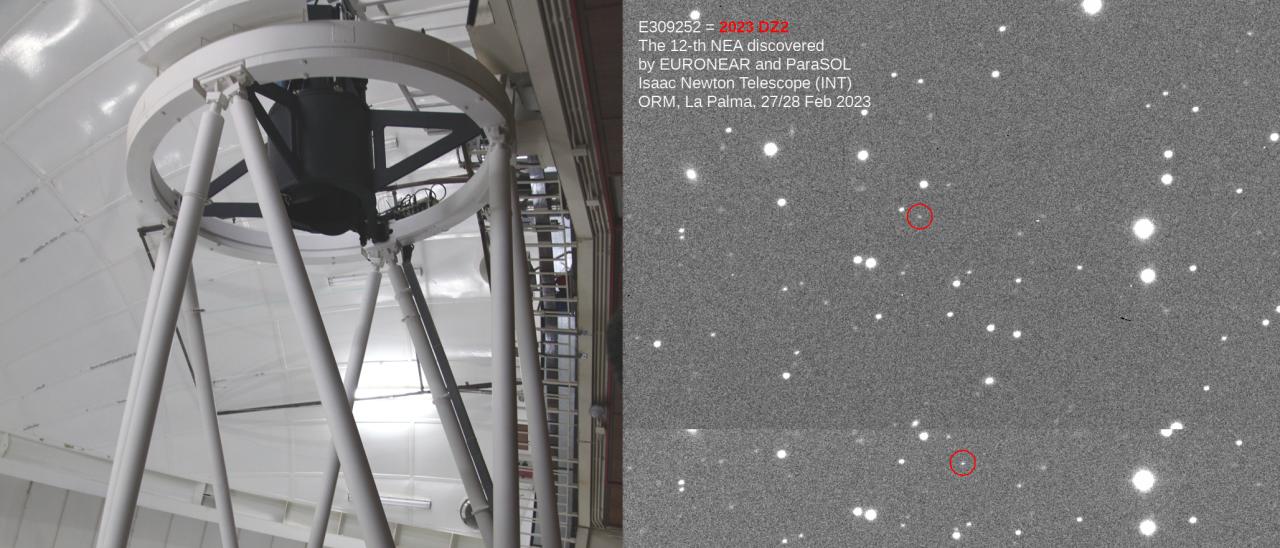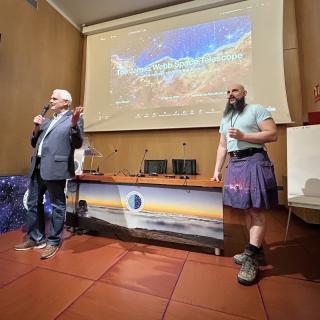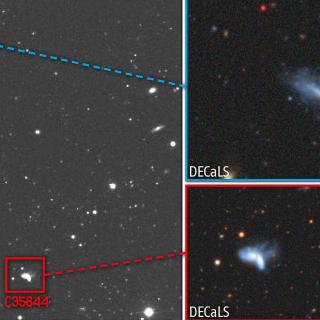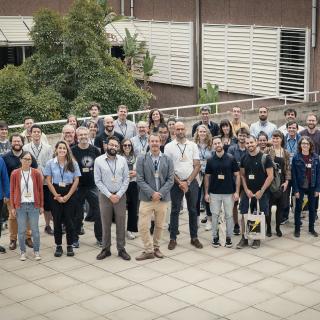An international scientific team, in which researchers from the Instituto de Astrofísica de Canarias (IAC) participate, confirms that the asteroid, discovered with the Isaac Newton telescope at the Roque de los Muchachos Observatory (La Palma), follows an orbit synchronised with that of Jupiter, which reduces the probability of a collision with our planet in the coming decades. The celestial body is very solid, metallic, rotates ten times every hour and is about 40 metres long. The study is published in the journal Astronomy and Astrophysics.
Asteroid 2023 DZ2, detected in February with the Isaac Newton Telescope (INT), will not collide with Earth. According to a recent study, completed only a month after the discovery, the object is affected by an unusual resonance with Jupiter and, although the Earth's orbit intersects with that of the asteroid, there is no real danger of a collision in the short to medium-term future.
The results also reveal that the object is extremely solid, rotates about 10 times every hour and is about 40 metres in size. According to the scientific team, its composition is most likely metallic. In the event of such an object hitting the Earth, most of it would reach the surface of our planet and would not disintegrate as it passes through the atmosphere.

"Having this information is important in the context of the prevention and mitigation of natural disasters. Cosmic impacts - collisions of asteroids or comets with Earth - are one of the few natural disasters that can be predicted with great precision if sufficient data is available", explains Raúl de la Fuente Marcos, a researcher at the Universidad Complutense de Madrid (UCM).
The research, in addition to demonstrating that it is possible to carry out a detailed and reliable study of the physical properties of an asteroid in a short period of time, is notable for having been carried out from a European infrastructure, as the object escaped detection by the numerous programmes funded by the US government. "It is unusual for discoveries of objects that could collide with Earth to be made outside of the USA. Neither Europe, nor China, nor the Russian Federation have such ambitious programmes, with so many resources", says Julia de León, a researcher at the IAC who participated in the study.
The researchers used observational techniques (both spectroscopy and photometry), machine learning algorithms and artificial intelligence to identify new objects in the acquired images. These algorithms are exclusive to the Romanian ParaSOL project, funded by UEFISCDI, and to EURONEAR, an international collaboration that includes professional and amateur astronomers and students mostly from Romania, Spain, the United Kingdom and Chile.
Artículo: Marcel M. Popescu et al: “Discovery and physical characterization as the first response to a potential asteroid collision: The case of 2023 DZ2 “ A&A, 676 (2023) A126. DOI: 10.1051/0004-6361/202346751
